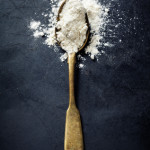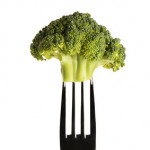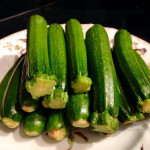Broccoli
Broccoli is a plant in the cabbage family with tight heads of green, purple, or white flower buds that are cooked and eaten as a vegetable. Broccoli comes from the Latin brachium, “strong arm/strong branch,” and comes from a reference to its shape. Broccoli is the Italian plural of broccoli, “cabbage sprout/head,” and literally means “little shoots.”
When shopping for broccoli look for heads that are dark green or purplish and tightly clustered. The stalks should be fresh looking and not tough or woody.
Refrigerate broccoli for up to five days in a perforated bag. Broccoli can be blanched and frozen for up to 1 year.
To remove dirt simply soak a head of broccoli upside down in a bowl of cold water for 20 minutes. Cut or peel off any stalk parts that are tough. Cut into spears. Broccoli can be precooked by blanching or parboiling.
Eat more broccoli!
Work With What You Got!”
© Victoria Hart Glavin Tiny New York Kitchen
Baby Zucchini
Baby zucchini are very tender, tasty simple vegetables that have more flavor than the larger Italian zucchini as well as being very easy to prepare and enjoy. Archeologists think that they are indigenous to Central America. They are very nutritious and are a good source of Vitamin A, C B6, thiamin, niacin, and Pantothenic acid. Baby zucchini are also a very good source of fiber, protein, folate, iron, magnesium, phosphorus, zinc, and copper.
Quick Roast: Cut lengthwise and roast with sliced onions for 25 minutes at 350 degrees.
Blanching: Drop zucchini into boiling water for 1 to 2 minutes. Then remove to an ice bath. Zucchini are now ready to cut lengthwise and add to salads, sauté with mushrooms, onions, and garlic.
Grilling: Brush zucchini with olive oil, sprinkle with fresh herbs or spices, and either grill on BBQ or grill in a grill pan for about 2 to 3 minutes on each side.
Microwave: Place zucchini in ziplock bag. Cut corner of bag and microwave on high for 3 to 4 minutes.
For Salads: Baby zucchini makes a great salad addition. Shred or grate raw and add to salads, or cut lengthwise and add to vegetable platters.
Raw: To eat raw make sure to wash before eating.
“Work With What You Got!”
© Victoria Hart Glavin Tiny New York Kitchen








